Drag king Bobby Pudrido arrived in New York for the first time this September. He traveled from his home in the Austin, Texas area for Bushwig, one of the biggest drag festivals in the country, now in its 13th year. After he performed with one of Bushwig’s Austin editions, Horrorchata, Bushwig’s producer and co-founder, invited him to perform in New York.
On stage, he co-hosts a set with his drag parent, Gothess Jasmine, also of Texas, and sparkles in a jacket of gold sequins, a cowboy hat on his head. A beard and goatee run the edges of his mouth and chin. Standing at the edge of a stage several feet above the floor, I point my camera at him and manage to freeze in time the joy on his face, a smile captured mid-speech. Later he performs a number combining the music of Selena and Ramón Ayala, a Mexican singer known for his accordion–Pudrido has his own onstage, bedecked in rhinestones. Like every performer at Bushwig, Pudrido is himself magic.
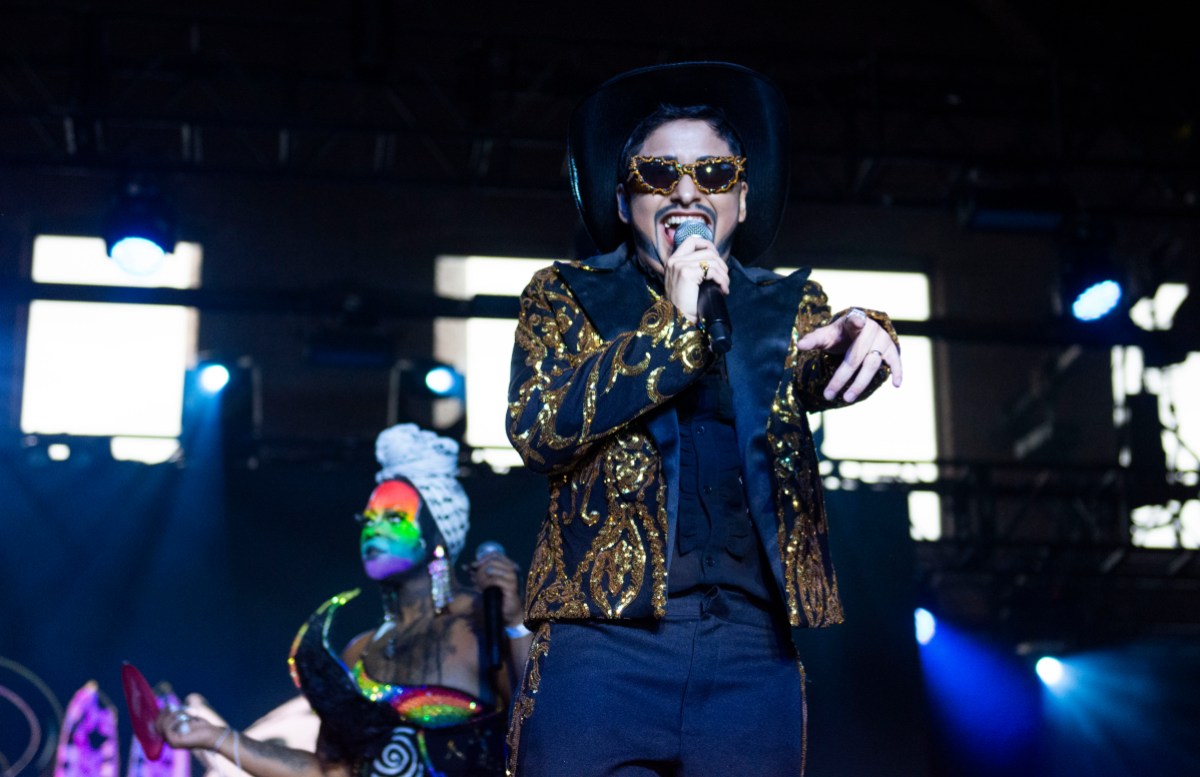
For drag lovers, performers, or both, Bushwig is a weekend festival filled with that same magic. It provides an opportunity to watch drag approximately eight hours a day for two days, not to mention DJs, dancing, and vendors. In both our current social climate and a historical context, it’s a wonder the festival not only exists but thrives. As harmful right-wing politics seek to silence the artform across the country, as it’s so often been suppressed throughout history, Bushwig’s prominence is a testament not just to the power of the festival, but to the power of the people who perform drag.
The event started in 2011, inspired by legendary drag artist Lady Bunny’s 80s-90s (and a 2018 “2.Ho” edition) drag festival Wigstock. At a small Brooklyn venue called Secret Project Robot that’s since shuttered, Horrorchata and co-founder Babes Trust, who passed away last year, began with 75 performers. This number has since more than doubled, and in every hour-long set, you’ll see a variety of drag artists across the gender spectrum–queens, of course, but also kings like Pudrido, and drag things, as they’re lovingly known, whose drag lives outside of the binary.
Many performers in the last two categories will tell you this is no small feat. Despite the generations of performers before them, it can still be difficult to get booked as a drag king or drag thing. Some people don’t take kings and things seriously enough, and some just add them as token filler on a bill. “Book Drag Kings” has become a longstanding battle cry, especially in an age where RuPaul’s Drag Race, in its wild success, has offered up only drag queens to the mainstream. And while Ru girls are an active presence at Bushwig as well, it matters for kings and things to have active placement and presentation on this lauded a stage.
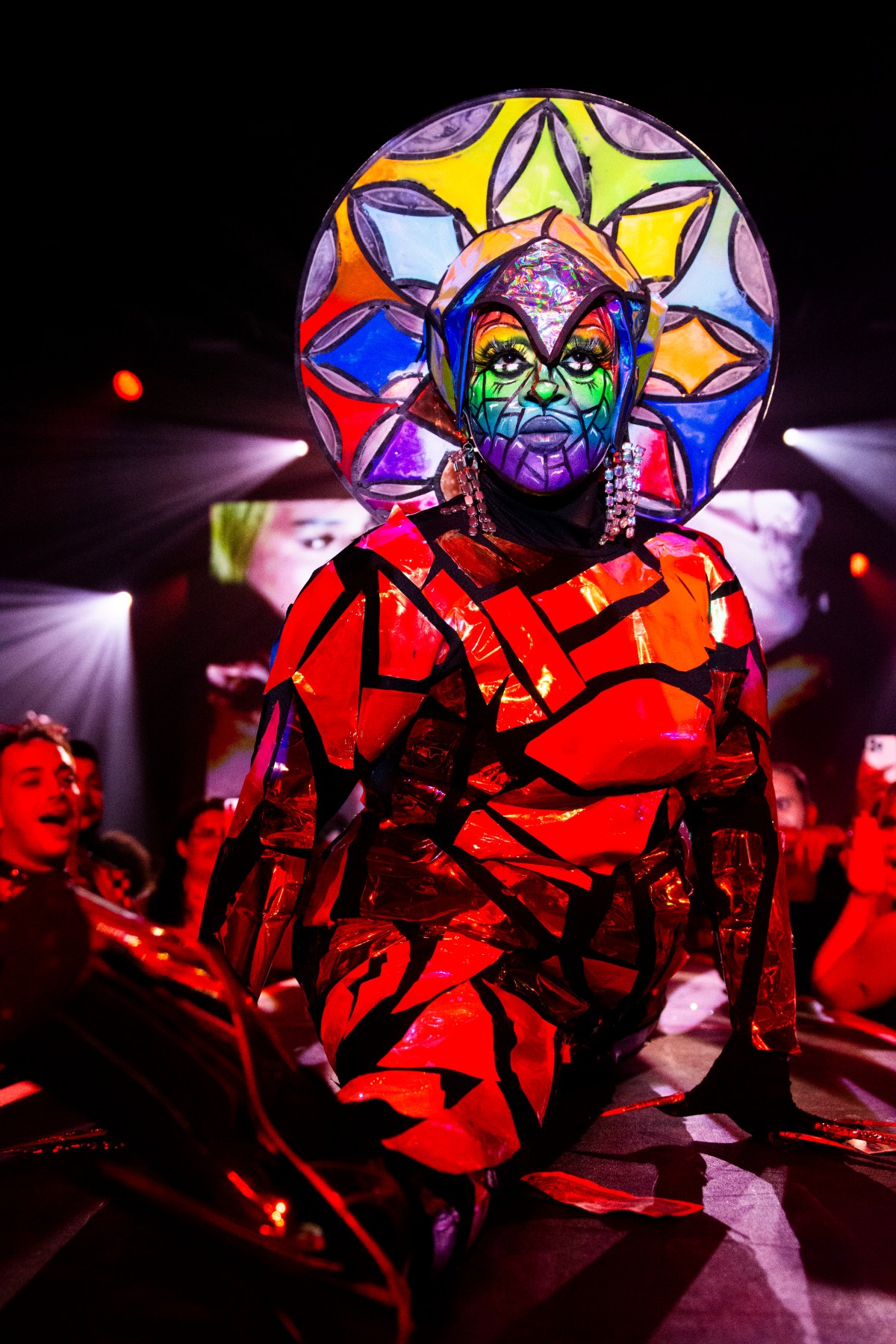
On the festival’s final night, beloved and celebrated drag artist Julie J took to the stage to say as much before introducing drag king Myster E Mel Kiki. “Drag kings are not only necessary, they are integral to New York City drag,” she said, before leading the crowd in a call-and-response of “Book!” “Drag Kings!” over and over, as if to make sure people understood.
Then, after Mel performed, for the first time in Bushwig history the festival crowned him their Mr. Bushwig, a new category in addition to the Ms. Bushwig category of years past. The crowd exploded with screams and applause. Horrorchata herself placed the crown on his head. “Not me saying the same thing you’ve heard a thousand times, but Book Drag Kings!” Mel said after taking his inaugural stroll down the Bushwig runway. “We’re funny, we’re fucking creative, we’re sexy, we’re everything, come on now…Society makes us make these little boxes or whatever. Fuck these labels, we people, we bleed the same blood…is this what a Ted Talk feels like?” He laughs, but the message is clear.

Bushwig is a stage that allows drag artists to occupy a vast space, in both the metaphorical and physical senses of the word. For some performers, this will be the largest stage they’ve performed on yet. For others, it’s a jumping off point. But for everyone, taking up that space for themselves is important both socially and culturally, especially if you’re a drag king or thing.
“I find myself really being smaller, just to try to stay safe as a trans person, especially transitioning right now medically. And I think that when I take up space in performance, I just make it a point to actively not care about that as much as I do in my day to day, and as much as I have throughout my entire life…I think that was just actively hyping myself up to take up as much space as possible at Bushwig,” Pudrido says. In Austin, he has a rich community of people that make him feel safe, though there are also pockets they all have to avoid or be more aware of. “Being in Bushwig is kind of just like letting that guard down,” he says. “I told Horrorchata, who had reached out to me to do the show, that it was life changing for me, just because I met so many people that are as excited and enthusiastic about the art that we do as I am, and as excited about drag kings and drag things as I am.”
San Francisco-based drag kings Luke Modelo and Major Hammy both said they typically enter a space not expecting a lot of attention as kings. But they felt the love after performing at Bushwig together in a lively aerobics-inspired number a friend described as “Blades of Glory meets Zumba,” complete with a soundtrack that included a remix of Reel 2 Real’s “I Like to Move It.” “I think the RuPaul of it all really does set the social public pacing of what drag is, what is valid drag, and is honestly a lot of people’s exposure to drag,” Hammy says, and because that formula works, why would people want to try something new? “The [societal] narrative is that drag kings are not marketable, and that weird, local drag that is true artform in different capacities is not marketable or is not as desirable,” Hammy says. “But from my experience, and even from our experience at Bushwig, that’s not true. People love weird art. People love to see authentic human stories being told in whatever way, shape or form, by talented people.”
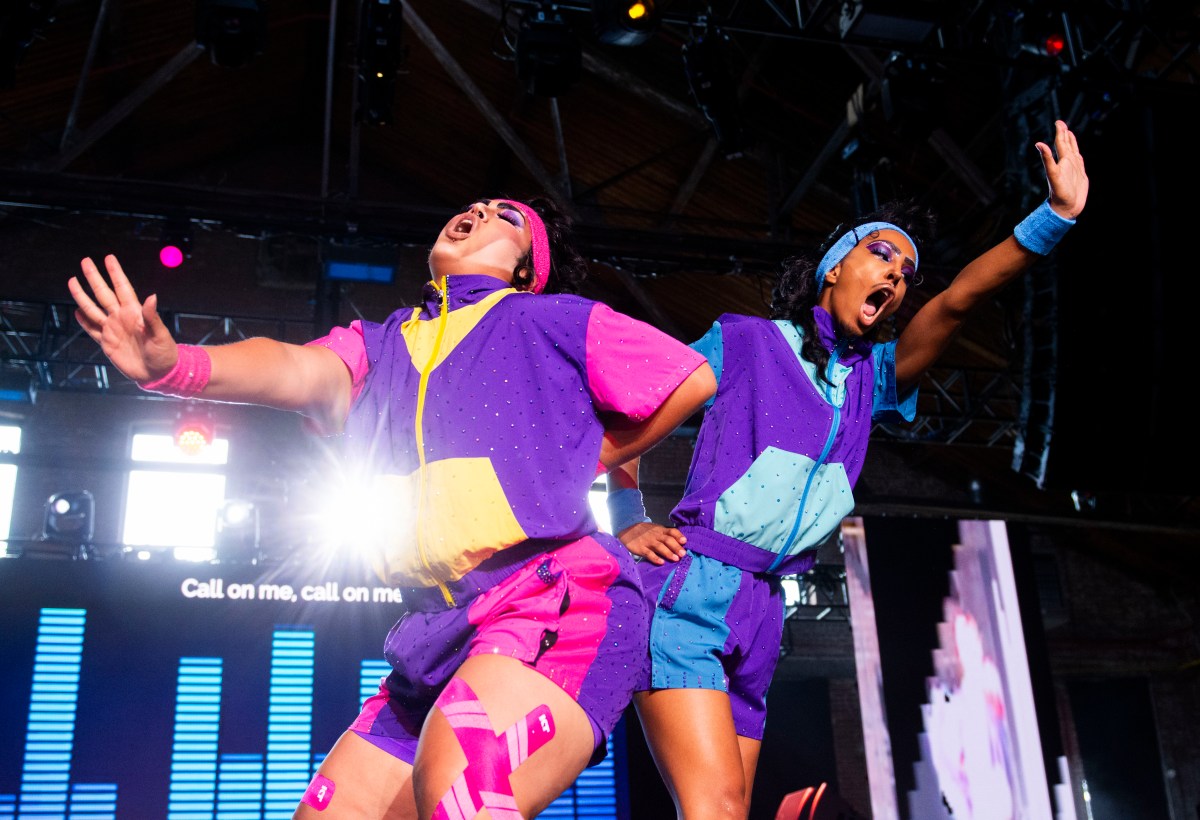
Show Ponii’s experience was similar. Moving to Brooklyn from New Paltz, New York, he sought a community that was accepting not just of drag kings but trans men. He felt support and encouragement in Brooklyn, but sees that it’s difficult to find elsewhere. “I started learning a lot of venues just don’t think drag kings are legitimate.They think that they’re hard to market, [that] they’re not going to bring any money, or they’re just not as hard working or as good as any of the drag queens. And there [are] some drag queens even who just don’t want to book drag kings, or just tokenize us,” he says. It’s another reason Bushwig is important. Horrorchata is one of the few producers, Ponii says, who’s always trying to book drag kings. He was happy to see a Mr. Bushwig crowned, and even though he felt it was overdue, he was so glad to see the kings’ role in the scene acknowledged there and in the festival’s actual lineup. It’s become a place for him to feel fulfilled and appreciated. To the tune of Fall Out Boy’s “Love from the Other Side,” looking both heavy metal and undead, he proffered a fiery performance, hair tossing and mouth bleeding, with an acid edge.
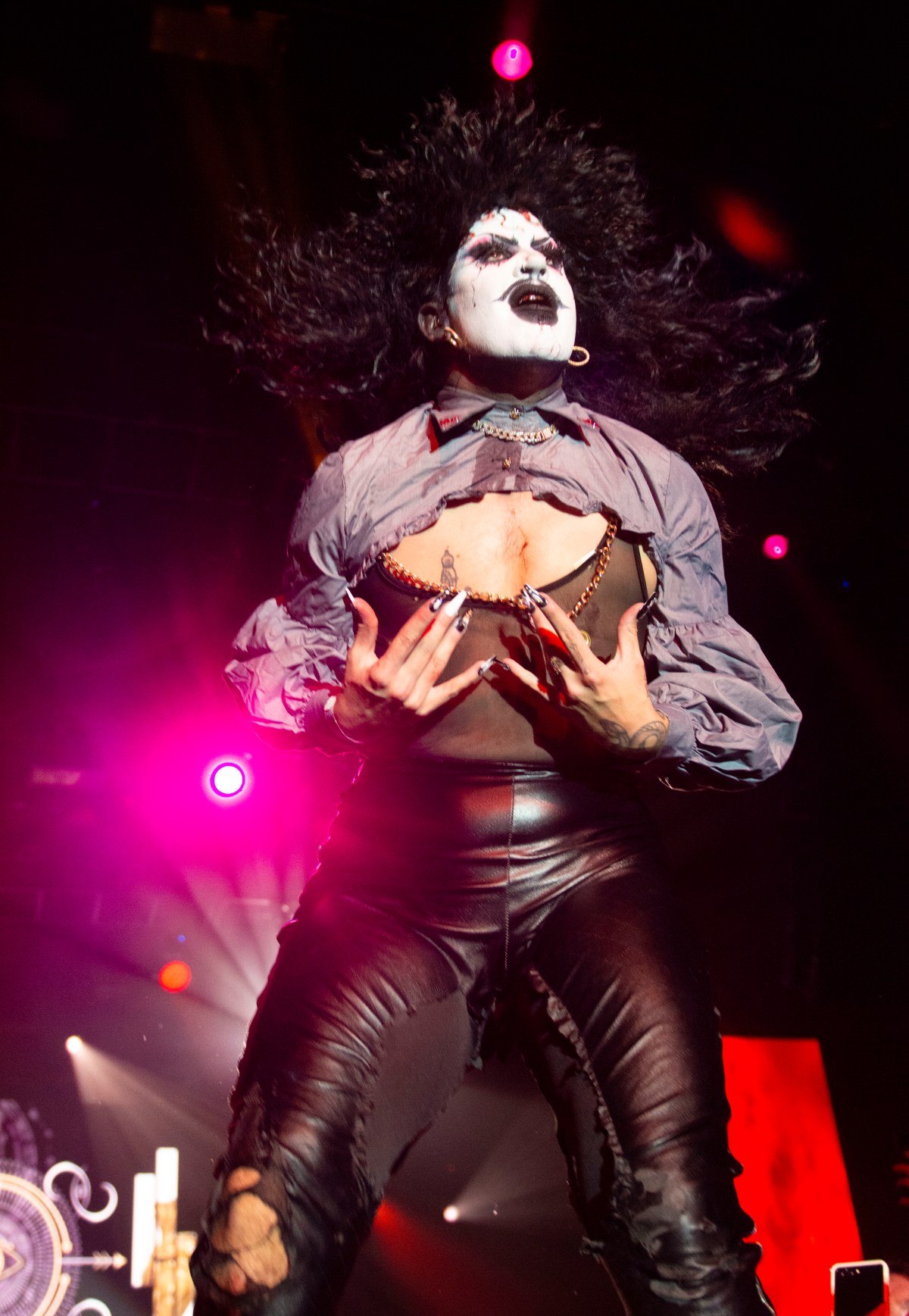
King Molasses, an acclaimed drag king from Washington, D.C., finds the power of Bushwig is in the possibilities it allows for both drag artist and audience to expand. In their number, featuring Kendrick Lamar’s “Untitled 08” and “Untitled 02,” they gave an electrifying performance dedicated to and honoring Black culture while also addressing the historical and current wounds of oppression. It’s powerful, too, Molasses says, that Bushwig invited them to participate not only as an out-of-town artist, but did so not knowing what their performance would be.
“My performance at Bushwig is a Black performance,” Molasses continues. “When I watch the videos back, I see a lot of white people in the front row kind of looking in awe and sort of unraveling around what is possible when we do not gatekeep and when we are not caught up in the binaries that cut up drag queens and kings from each other. And even further, drag things, drag alternative performers, it sort of doubles down. I’m that good because we are that good as a collective.”
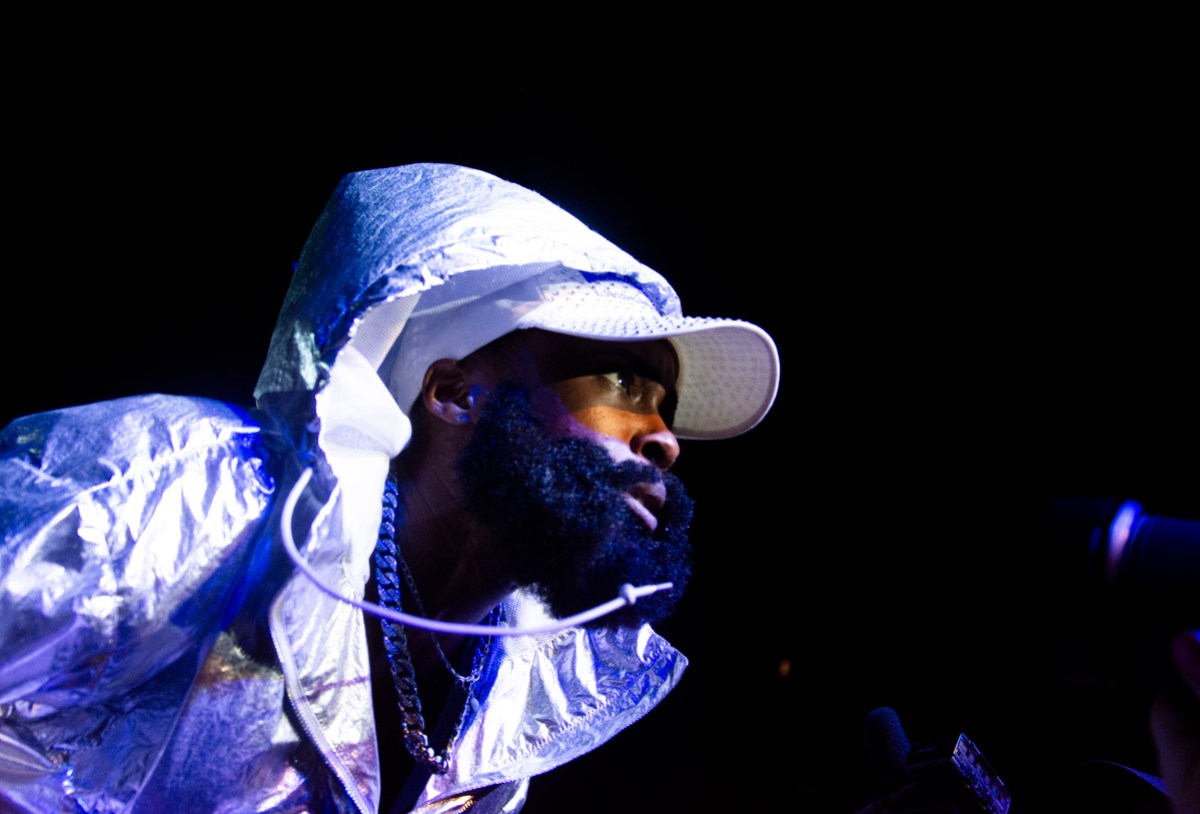








Comments
This is awesome! Long may Mr. Bushwig rein!
love this! great reporting
I was extremely impressed with his Geometry Dash Scratch performance.
thanks for this post